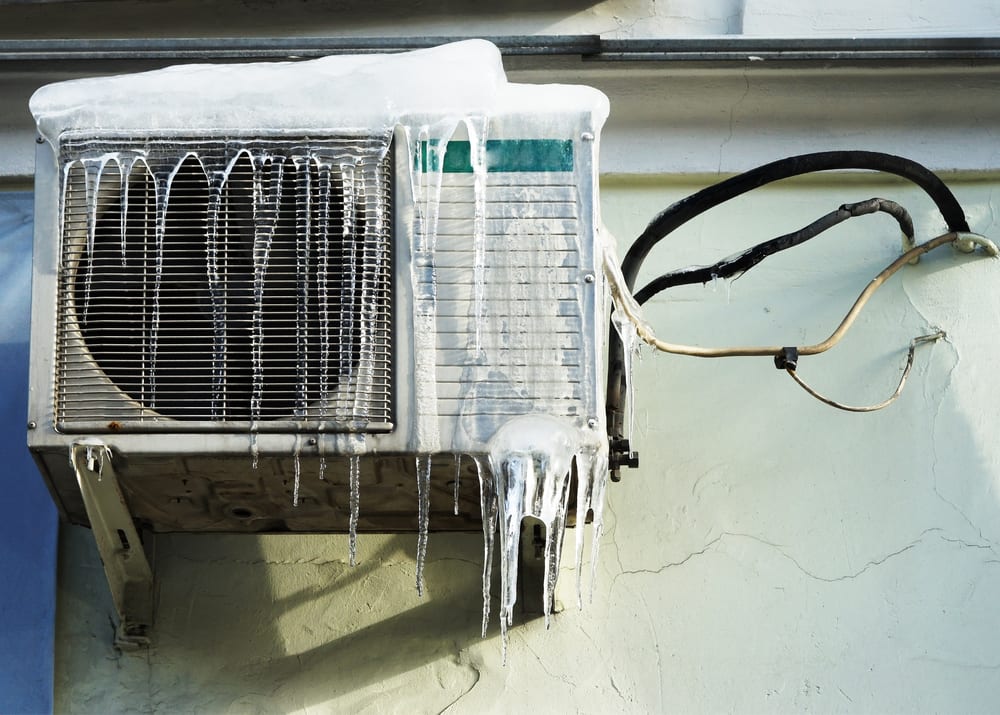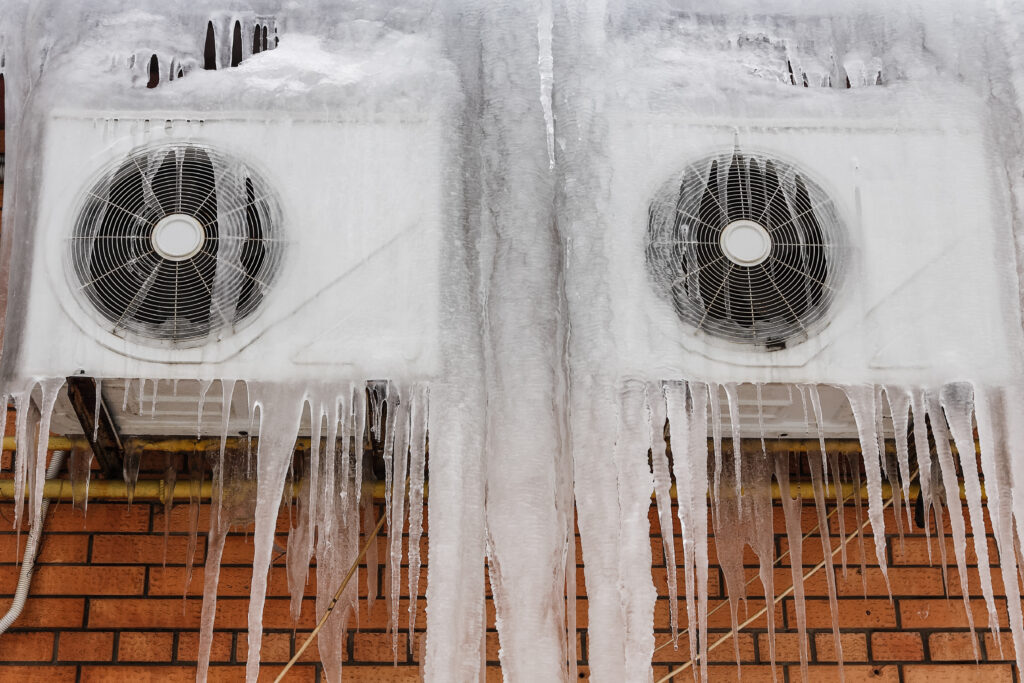Handling a Frozen AC Pipe - Guidance for Resolving the Issue
Handling a Frozen AC Pipe - Guidance for Resolving the Issue
Blog Article
Were you interested in facts and techniques concerning What Causes AC Pipes To Freeze??

Introduction
Discovering that your air conditioner pipe is frozen can be concerning, particularly during warm summer months when you count on your air conditioning system one of the most. Understanding what to do in such a situation is vital to stop additional damage to your cooling system and guarantee your comfort indoors.
Comprehending the Causes
A number of elements can contribute to the freezing of an air conditioner pipe. Understanding these reasons can assist you address the concern successfully.
Lack of Airflow
One typical cause of an icy air conditioning pipeline is inadequate airflow. When the air flow over the evaporator coil is limited, it can cause the coil to go down below freezing temperature, resulting in ice development on the pipe.
Low Refrigerant Levels
Insufficient cooling agent levels in your AC system can additionally cause a frozen pipe. Reduced refrigerant degrees can cause the pressure in the system to go down, causing the freezing of moisture on the evaporator coil.
Winter Conditions
In cooler environments, freezing temperature levels outside can add to the cold of air conditioning pipelines. If your a/c unit is not properly shielded or if there are leaks in the ductwork, chilly air can infiltrate the system, causing the pipeline to freeze.
Dirty Air Filters
Filthy or clogged up air filters can limit air movement in your a/c system, bring about numerous concerns, including a frozen pipe. It's vital to change or clean your air filters frequently to guarantee appropriate air movement and avoid ice buildup.
Signs of a Frozen Air Conditioning Pipe
Acknowledging the signs of an icy air conditioner pipeline is vital for punctual action.
Decreased Airflow
If you discover a substantial decrease in air flow from your vents, it might show an icy pipeline.
Ice Buildup on the Pipe
Visible ice build-up on the cooling agent line or the evaporator coil is a clear indication of a frozen AC pipeline.
Unusual Sounds from the Unit
Uncommon sounds, such as hissing or gurgling, coming from your AC device can signal that there's ice existing on the pipe.
Immediate Actions to Take
When faced with a frozen air conditioner pipe, it's essential to act swiftly to prevent additional damages to your cooling system.
Shutting off the air conditioning
The first step is to switch off your air conditioning unit to stop the system from running and worsening the concern.
Looking for Blockages
Check the area around the indoor device for any blockages that might be obstructing air flow, such as furnishings or drapes.
Thawing the Pipe
You can make use of gentle techniques like putting towels soaked in warm water around the frozen pipe to help thaw it gradually.
Safety nets
Taking preventive measures can aid prevent future incidents of a frozen AC pipeline.
Normal Maintenance Checks
Arrange routine upkeep get in touch with a professional HVAC service technician to make sure that your air conditioning system is running effectively.
Transforming Air Filters
Regularly replace or cleanse your air filters to stop air flow restrictions and preserve ideal efficiency.
Shielding Exposed Pipes
If your air conditioner pipelines are exposed to cool temperature levels, take into consideration shielding them to prevent cold during cold weather.
Looking For Professional Help
If DIY techniques fail to solve the problem or if you're unclear about exactly how to continue, it's finest to seek assistance from a certified HVAC specialist.
When DIY Methods Fail
If your efforts to thaw the pipe or address various other concerns are not successful, it's time to call an expert.
Significance of Hiring a Professional HVAC Technician
A certified HVAC service technician has the competence and tools needed to identify and fix issues with your AC system securely and efficiently.
Conclusion
Taking care of a frozen air conditioner pipe can be a frustrating experience, however understanding just how to react can aid decrease damages and restore convenience to your home. By comprehending the reasons, acknowledging the indications, and taking prompt action, you can efficiently resolve the concern and stop future incidents.
What to Do If Your AC Line Is Frozen
Make Sure All Supply and Return Air Vents Are Open
If you notice problems with airflow, the first thing you should do is check your supply and return vents. Supply vents distribute clean, conditioned air throughout your home. As this air becomes stale, it’s pulled into the return vent, where it’s reconditioned before being sent back out through the supply vent.
When these vents are closed, air won’t flow in the home. Before examining your AC, check the vents in every room and ensure they’re all open.
Check for a Dirty Air Filter
Another possible cause of limited airflow is a dirty air filter. Your air conditioner’s filters catch elements you don’t want to breathe in, such as dirt and dust. Over time, filters can become clogged, ultimately blocking air from flowing in and out. The lack of airflow can then cause the entire coil to freeze and will completely restrict any air from moving through it. The AC may need to be powered off for one to two days to allow the coil to thaw after replacing the filter to allow proper functioning of the unit. This debris can also accumulate on your AC’s evaporator coil, requiring a more serious repair. In general, air filters should be cleaned regularly (about every two weeks).
Assess Your Outdoor Unit
In addition to checking your AC, assessing the outdoor unit is a good idea. Also known as the condensing unit, it works with your interior unit to release heat outside. An issue with the outdoor unit can result in rising internal temperatures.
Overgrown Shrubs or Clogged Leaves
From leaves and twigs to shrubs and debris, there’s no shortage of outdoor elements that can accumulate around your condensing unit. When these elements get lodged inside the unit, they can block airflow. Fortunately, removing the blockage can solve the problem.
Sounds of a Broken Fan
Shrubs and leaves aren’t the only things that can impede your outdoor unit’s airflow. If the fan is broken, the unit won’t be able to properly get rid of heat — which means the internal temperature won’t go down. First, make sure the fan is spinning. If it is, check for the following sounds of a broken fan:
Buzzing Rattling Screeching Hissing Clicking Preventative Measures
Nobody wants to deal with a frozen AC line. In addition to causing problems with your air conditioner, they require professional repairs. On the bright side, there are preventative measures you can take to help ensure this issue doesn’t arise in the first place.
https://www.coopergreenteam.com/blog/what-to-do-if-ac-line-frozen

As a keen person who reads on How can I fix an air conditioner’s frozen pipe?, I figured sharing that section was essential. Sharing is nice. You never know, you may very well be doing someone a favor. Many thanks for your time spent reading it.
Schedule A Service Report this page